Key takeaways:
- DNA testing reveals familial connections that traditional genealogy may overlook, enhancing our understanding of family history.
- Different types of DNA tests—autosomal, mitochondrial, and Y-DNA—offer unique insights into our ancestral lineage and can reshape our sense of belonging.
- Interpreting DNA results can lead to unexpected discoveries and emotional connections with relatives, transforming the narrative of one’s family history.
- DNA evidence can fill gaps left by traditional records, allowing for the uncovering of family secrets and a deeper understanding of heritage.
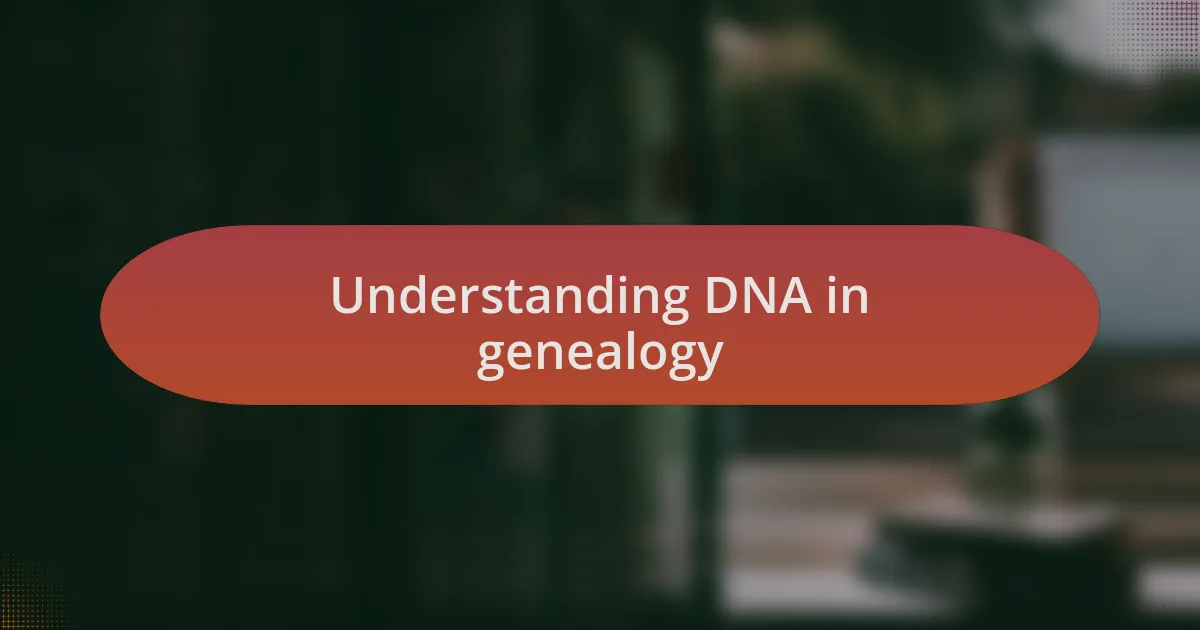
Understanding DNA in genealogy
DNA plays a critical role in genealogy by providing concrete evidence of our ancestral connections. When I first submitted my DNA sample, I was eager yet apprehensive—would it unveil long-lost relatives or reveal surprises about my heritage? That thrill of anticipation illustrates why DNA testing has become a fascinating tool for many of us looking to piece together our family puzzles.
What I found truly enlightening was how DNA can pinpoint relationships that traditional records might not reveal. For example, when I discovered a half-sibling through a match on a testing platform, it felt like a scene straight out of a family reunion I never knew I needed. This personal connection underlines the emotional depth and power of understanding DNA in genealogy.
Understanding different types of DNA tests—such as autosomal, Y-DNA, and mitochondrial—can be a game-changer in your genealogical research. I remember grappling with these terms during my own research; once I figured out what each test revealed, it was like unlocking a treasure chest of family history. Have you considered how these varied tests could illuminate your unique lineage? It can truly reshape our sense of belonging as we connect dots across generations.

Importance of DNA testing
DNA testing has transformed the landscape of genealogy, offering insights that traditional methods simply can’t. I remember the moment I received my results; a mix of excitement and nervousness bubbled up inside me. What secrets would my own DNA reveal about my ancestry? The realization that I could uncover branches of my family tree that were previously just a mystery was exhilarating.
One day, while exploring my DNA matches, I stumbled upon a distant cousin I never knew existed. We both shared an ancestor, which made me reflect on how interconnected our lives are, even across miles and generations. This experience reassured me about the importance of DNA testing—not just as a means of tracing lineage but as a way to connect with a larger family narrative. Have you thought about how a simple test could lead to unexpected relationships and discoveries?
Moreover, DNA testing holds the potential to clarify complex family histories. In my case, unraveling the truth behind an old family rumor about our ancestry was enlightening. When DNA evidence contradicted what I had long believed, I felt a mix of emotions—surprise, confusion, and ultimately, acceptance. This process underscores how powerful DNA can be in rewriting our understanding of family lore, shaping our identities in ways we never anticipated.
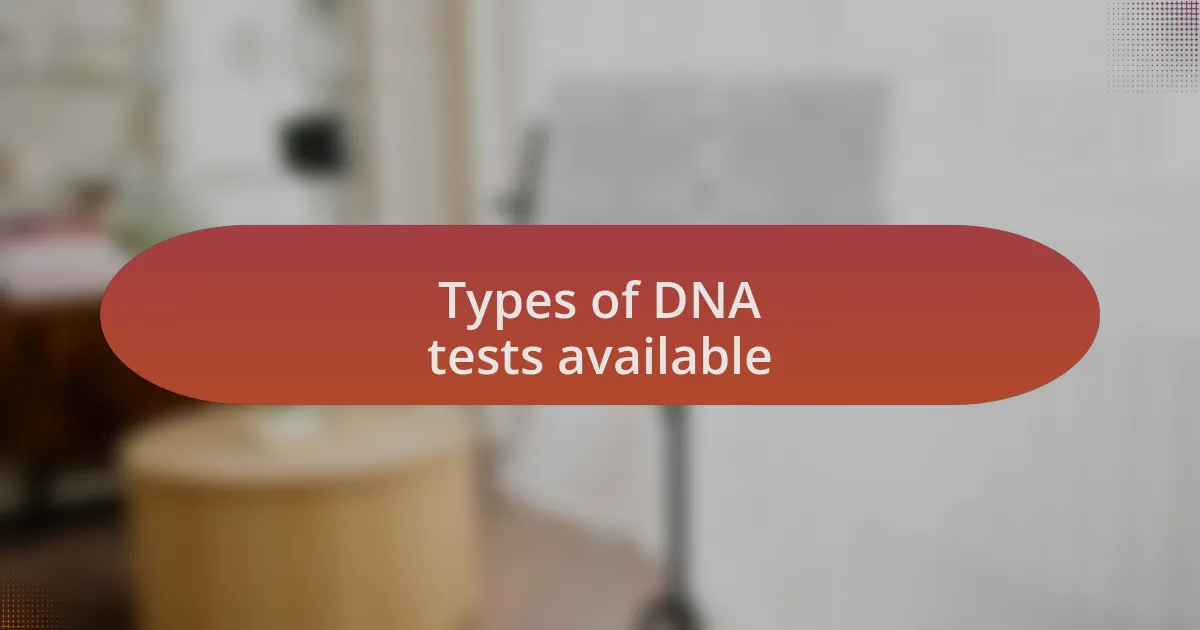
Types of DNA tests available
When it comes to DNA testing, there are three primary types to consider: autosomal, mitochondrial, and Y-DNA tests. I’ve dabbled with all three, and each provided a unique lens through which to view my ancestry. Autosomal tests are the most common; they analyze the DNA inherited from all ancestors within the last five generations. This test opened up a window to connections I never knew existed, revealing both familiar faces and surprising new relatives.
Mitochondrial DNA tests trace maternal lineage, focusing on the DNA passed down from mother to child. I remember being captivated by the notion that this test could shed light on my maternal grandmother’s lineage, taking me back potentially hundreds of years. It felt like embarking on a journey back in time, and learning about my female ancestors brought a deep sense of pride and connection to my heritage that I hadn’t anticipated.
On the other hand, Y-DNA tests are specifically for male lines, following the paternal lineage. I found this particularly interesting because it allows men to explore their direct male ancestry, which can sometimes uncover unexpected ancestral paths. Knowing that my father and I share specific markers on our Y chromosome gave me a sense of continuity that is both grounding and compelling—not to mention the potential for fascinating stories hidden in our paternal past. Have you considered which type of test might reveal the most about your family’s story? Each test truly has its own treasure trove of insights waiting to be uncovered.
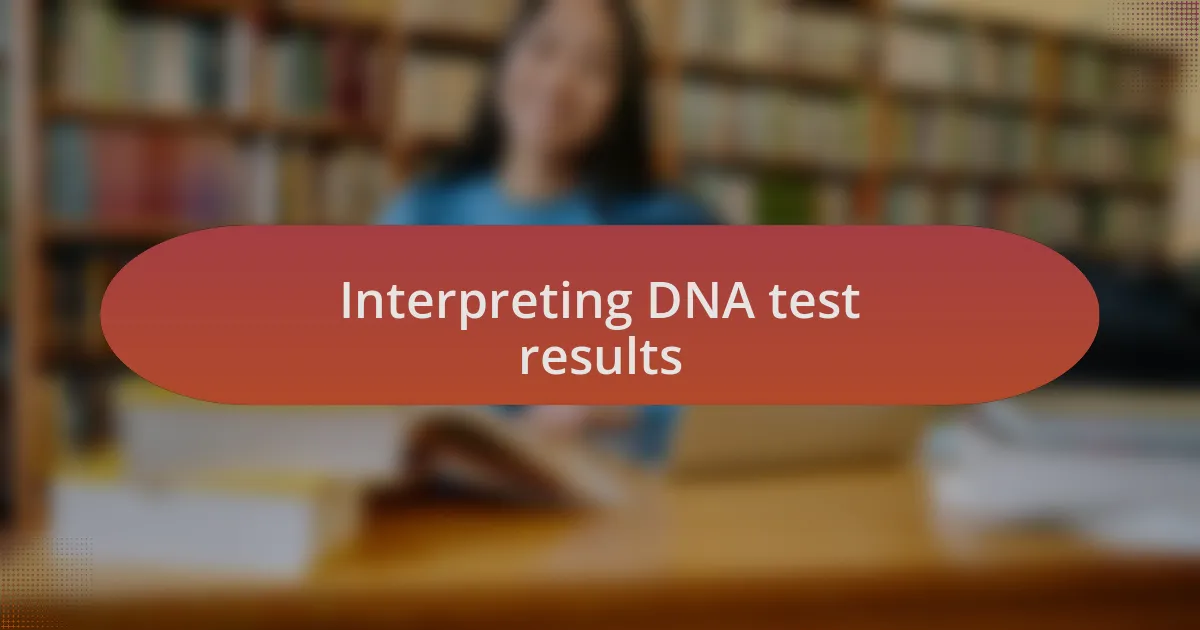
Interpreting DNA test results
Interpreting DNA test results can feel like deciphering a complex puzzle. When I first received my results, I was both excited and a bit overwhelmed by the sheer amount of data presented. The connection percentages and lists of genetic relatives sparked curiosity—who were these matches, and how were we related? It made me realize that each number has a story behind it, just waiting to be uncovered.
One standout moment was when I connected with a previously unknown cousin. The shared DNA percentage was a mere 2%, yet it opened up an avenue of exploration I had never imagined. We started exchanging messages, piecing together our family trees and, in the process, discovering shared ancestors that bridged our lives. It’s incredible how a simple set of numbers can lead to profound relationships and create bonds that feel like family.
As I delved deeper, I learned to focus on the “hints” in my results—clusters of relatives who shared the same ancestral lines. I often found myself asking: how did these families intertwine? This question not only led to further research but also fueled my passion for genealogy. Every result was an invitation to dig deeper into my lineage and uncover stories of resilience, migration, and love that would have otherwise remained hidden. The excitement of discovery is truly addictive—have you experienced that feeling yet?
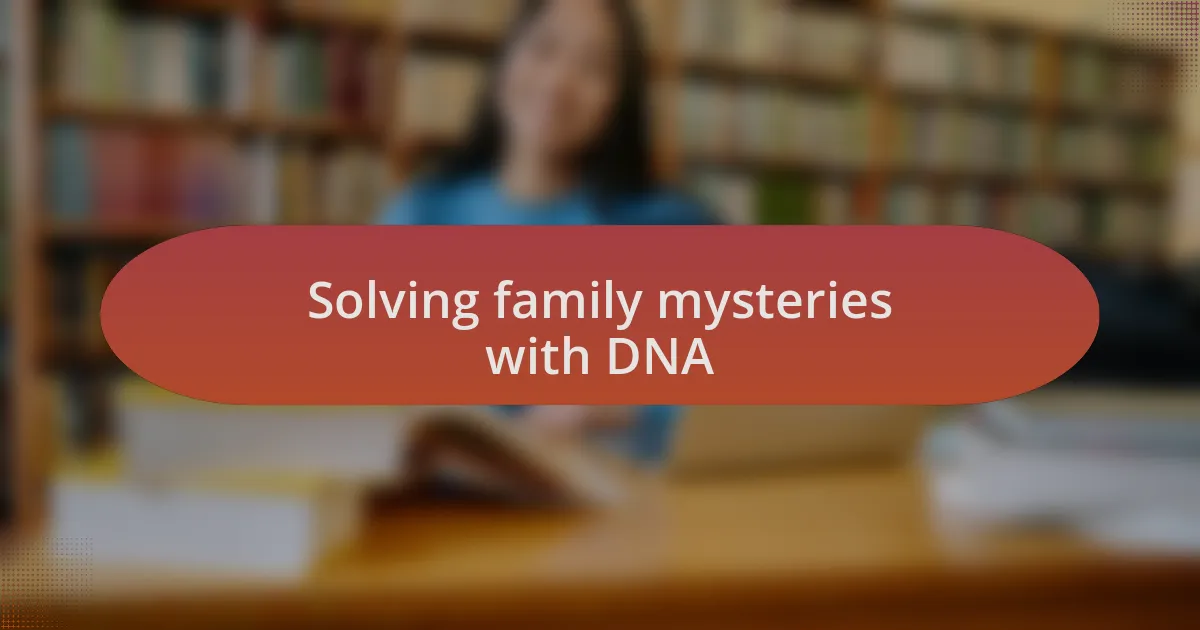
Solving family mysteries with DNA
Solving family mysteries with DNA is like embarking on a treasure hunt. I vividly recall the moment I stumbled upon a surprising revelation about my great-grandfather. His name had long been a mystery, but a distant match led me to old census records that confirmed his origins, illuminating a forgotten chapter of my family history. Isn’t it fascinating how a single connection can light the path to unearthing hidden stories?
As I followed this lead, I became aware of the emotional weight tied to these discoveries. Learning about my ancestors’ struggles and triumphs brought a sense of belonging that I hadn’t anticipated. Each revelation from the genetic data was not just about where I came from, but also about who I am today. Have you ever felt such a profound connection to your lineage?
Paper trails often leave gaps, yet DNA evidence can fill in those missing pieces. For me, cross-referencing my genetic results with historical documents led to uncovering a family secret that reshaped our understanding of lineage. It made me wonder: what stories are waiting to be unveiled in your own family tree? When paired with research, DNA has the potential to reveal not just connections, but the emotional tapestry of our heritage.
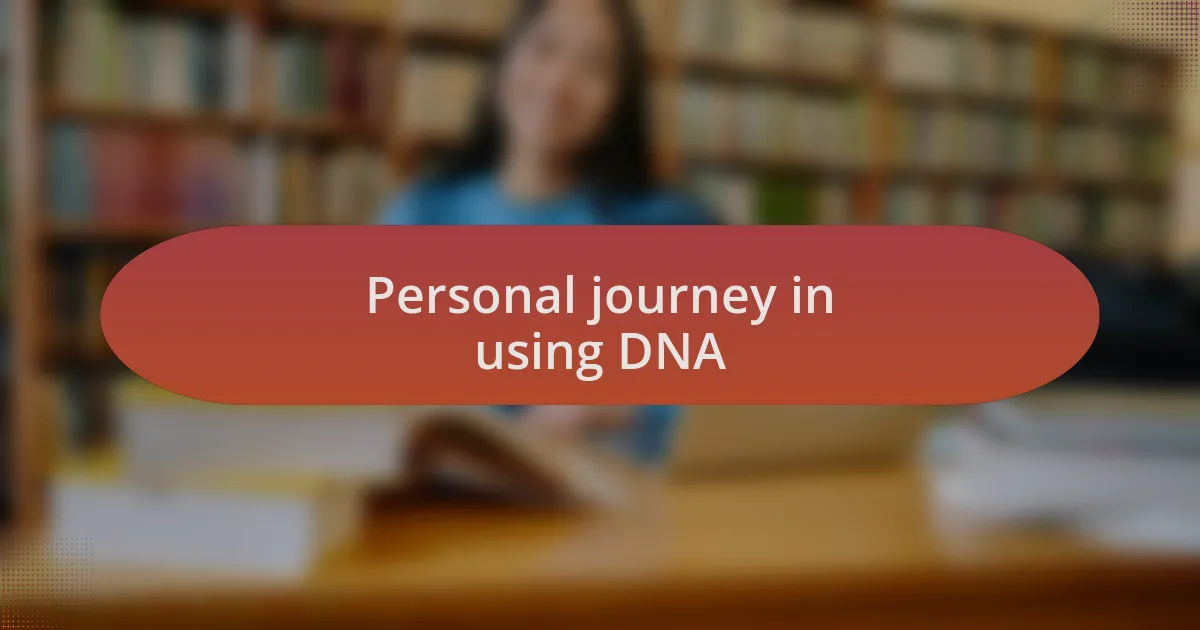
Personal journey in using DNA
Embarking on my DNA journey was both thrilling and intimidating. I remember the day my results arrived; it felt like I was opening a door to a world I never knew existed. The ethnic breakdown surprised me, revealing ties to regions I had only learned about in history books. Have you ever received unexpected news that reshaped your identity?
As I delved deeper, I discovered a half-sibling I had never known existed. Scanning through our shared ancestry and exchanging messages with them ignited a profound emotional connection. It reminded me that family isn’t only about those we’ve grown up with; it extends to those we have yet to meet. Doesn’t that add a fascinating layer to our understanding of family dynamics?
Additionally, one significant breakthrough came when I connected with a cousin who had extensive family records that aligned perfectly with my DNA results. The thrill of piecing together our shared history felt like solving a massive puzzle. It’s incredible to think how a simple DNA test can ignite such connections. Have you experienced a similar moment of discovery that made you rethink your family’s narrative?